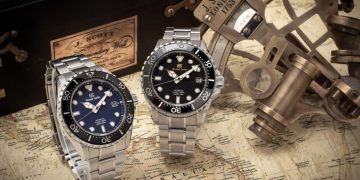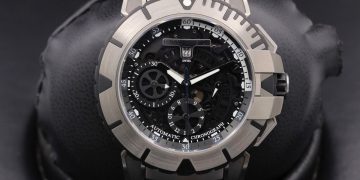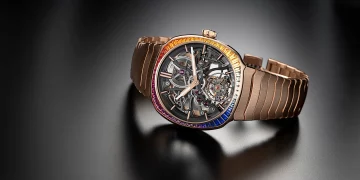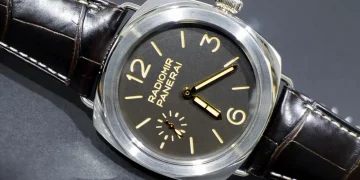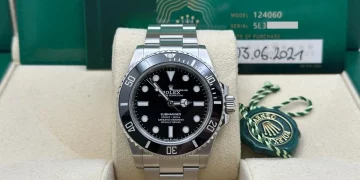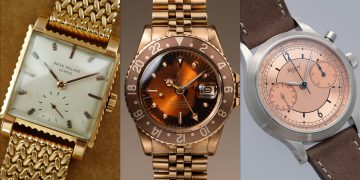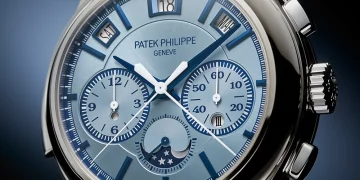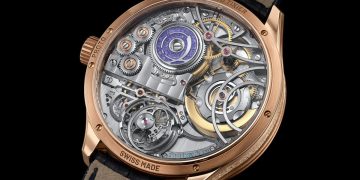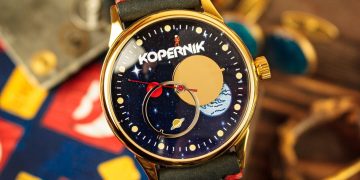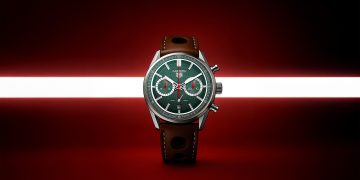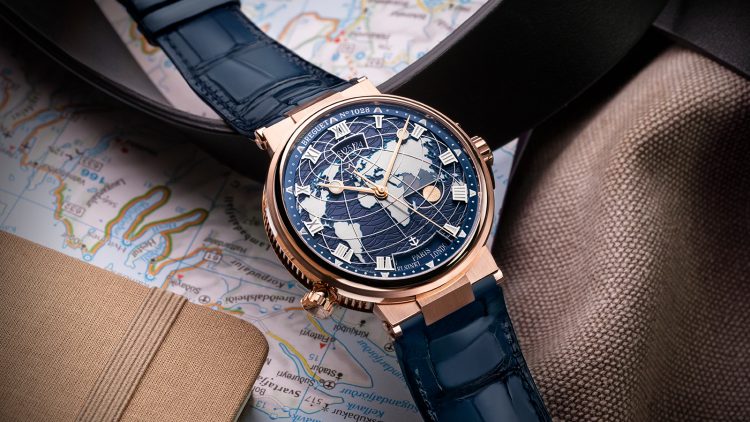Introduction
In the world of luxury watchmaking, Swiss watches represent the pinnacle of craftsmanship, precision, and innovation. Two of the most iconic brands within this esteemed realm are International Watch Company (IWC) and Breguet, each with a legacy that has not only stood the test of time but has actively shaped the evolution of horology. Both companies, despite their unique identities, have become symbols of quality, artistry, and technological excellence in the watch industry.
But how did these two companies come to define the essence of Swiss watchmaking? What sets them apart in terms of history, culture, and innovation? And most importantly, how have IWC and Breguet contributed to the global perception of luxury timepieces?
This article delves deep into the brand history, founding stories, and cultural influence of IWC and Breguet, exploring how each brand’s unique journey has shaped not just the world of horology but also the broader landscape of luxury goods and craftsmanship. Through this exploration, we will uncover how these two brands have cultivated legacies that continue to influence the culture and perception of Swiss watches.
1. The Birth of IWC: A Vision of Precision and Innovation
The Founding of IWC
In 1868, Florentine Ariosto Jones, an American engineer, founded the International Watch Company (IWC) in Schaffhausen, a city in northeastern Switzerland. At a time when the Swiss watch industry was still predominantly focused on traditional artisanal methods, Jones sought to revolutionize Swiss watchmaking by combining Swiss craftsmanship with American industrial precision.
Jones, originally from Massachusetts, was inspired by the American industrial revolution’s manufacturing techniques, which emphasized efficiency, machinery, and precision. He believed that Swiss watchmaking, although renowned for its craftsmanship, could benefit from these innovations. As a result, IWC became one of the first Swiss watch companies to introduce modern manufacturing methods alongside handcrafted elements.
The strategic location in Schaffhausen, located along the Rhine River and close to German-speaking regions, provided IWC with access to skilled labor and helped the company leverage both Swiss precision and German engineering. From the outset, IWC’s philosophy was clear: it was to create luxury watches that combined reliability, engineering excellence, and functional design.
Early Years and Expansion
IWC’s first major breakthrough came in the late 19th century, when the company introduced the pocket watch with high-precision movements. IWC’s watches quickly gained a reputation for being exceptionally reliable, especially in the emerging markets of North America, where precision timepieces were in demand. The company’s early commitment to technical accuracy, combined with its focus on design innovation, set it apart from other Swiss watch manufacturers of the time.
In the early 20th century, IWC’s commitment to functionality and precision began to gain broader recognition. The brand introduced a series of aviation watches, which would eventually become one of its most iconic collections. The IWC Pilot’s Watch, introduced in the 1930s, was designed specifically for pilots, with large, easy-to-read dials, robust cases, and reliable movements, making it a vital tool for aviators during the early days of aviation.
This focus on creating watches for practical use, rather than purely decorative purposes, became a hallmark of IWC’s identity. As a result, IWC watches began to be seen not just as luxury accessories, but as tools that could withstand the rigors of daily life while maintaining elegance and precision.
The Modern IWC Legacy
Over the decades, IWC has continued to build upon this foundation, releasing collections such as the Portuguese, the Ingenieur, and the Aquatimer, each reflecting IWC’s commitment to innovation and functional luxury. IWC has also expanded its offerings with more complicated models like perpetual calendars, chronographs, and tourbillons, while staying true to its roots in practicality.
Today, IWC is renowned for its engineering excellence and high-end watchmaking, combining state-of-the-art movements with designs that cater to both watch collectors and adventurous professionals. It is one of the most recognized and respected names in the luxury watch industry, with a global reputation for producing watches that balance technical sophistication with timeless elegance.
2. The Birth of Breguet: Innovation, Artistry, and Royal Patronage
The Founding of Breguet
Unlike IWC, which emerged in the mid-19th century, Breguet was founded much earlier, in 1775, by Abraham-Louis Breguet, one of the most innovative and influential watchmakers in history. Born in Neuchâtel, Switzerland, Breguet’s early career was steeped in the artisanal traditions of Swiss watchmaking, but his technical genius and artistic vision would soon set him apart from his contemporaries.
Abraham-Louis Breguet is credited with inventing some of the most important developments in watchmaking history, including the tourbillon, the perpetual calendar, and the chronograph. He was a master of mechanical engineering, but his watches were also renowned for their aesthetic beauty. His designs were influenced by the rococo and neoclassical movements, and they incorporated elegant guilloché dials, enameled cases, and intricate decorative patterns.
Breguet’s watchmaking was revolutionary, but it was his relationship with royalty that helped elevate his brand to legendary status. He became the favored watchmaker of European aristocracy, including Queen Marie Antoinette, Napoleon Bonaparte, and King Louis XVI. In fact, the famous Marie Antoinette Watch, one of the most legendary timepieces ever created, was commissioned by the queen herself, and its creation took over 40 years to complete.
Royal Patronage and Technological Innovation
Breguet’s reputation for craftsmanship and innovation led to a flood of royal commissions. The brand became a symbol of elegance and status, with clients from all corners of Europe seeking Breguet’s watches as a reflection of their wealth and taste. Breguet’s handmade dials, precision movements, and complicated features made his watches not only functional but also works of art.
Breguet was also an innovator in the field of materials. He introduced hardened steel to the watchmaking world and is credited with perfecting the balance spring, a crucial element of mechanical movements that has become a standard in horology today. Additionally, Breguet’s commitment to developing complicated movements, such as the self-winding mechanism and the split-seconds chronograph, cemented his status as one of the most important figures in the history of watchmaking.
The Modern Breguet Legacy
Though Breguet himself passed away in 1823, his name continues to be synonymous with luxury and innovation. Today, Breguet is still known for creating complicated, high-end timepieces that combine traditional craftsmanship with modern technologies. The brand’s signature pieces, such as the Classique Tourbillon and the Marine Chronograph, reflect its commitment to creating watches that are both technically advanced and artistically beautiful.
Breguet’s modern offerings still include handcrafted dials, sophisticated complications, and precision movements, but the brand also remains committed to pushing the boundaries of watchmaking with the introduction of new materials like platinum, 18k rose gold, and sapphire crystal. Breguet’s haute horlogerie watches, which are often produced in limited editions, remain some of the most coveted timepieces in the world.

3. Comparing the Legacy of IWC and Breguet: How They Define Swiss Watchmaking
Innovation vs. Tradition
One of the most significant differences between IWC and Breguet is the emphasis each brand places on innovation versus tradition.
- IWC, with its roots in engineering precision, has built its legacy around innovating functional designs for modern professionals. IWC’s focus on practical utility, such as the Pilot’s Watch and the Aquatimer collection, underscores the brand’s philosophy that a luxury watch should not only be beautiful but also reliable and functional.
- Breguet, on the other hand, has always strived to combine artistic beauty with technological innovation. Abraham-Louis Breguet’s legacy of refining watchmaking techniques and introducing complications like the tourbillon shows the brand’s unwavering commitment to both technical mastery and artisanal craftsmanship. Breguet’s focus has been on creating timepieces that are as much about art as they are about functionality.
Cultural Impact: From Royalty to Modern Collectors
Breguet’s cultural influence has historically been tied to royalty and elite patronage. Its watches were worn by kings, queens, and imperial figures, cementing the brand as a symbol of status and luxury. Today, Breguet continues to attract a clientele of
discerning collectors, with an emphasis on haute horlogerie and rare, complicated movements. Its watches are often seen as collectible heirlooms, prized for both their historical significance and their technical complexity.
IWC, by contrast, has always been more focused on practical luxury and engineering excellence. While it has also attracted affluent collectors, its appeal has always extended beyond the ultra-wealthy elite to a broader audience that appreciates high-quality, functional watches. IWC’s watches, such as the Pilot’s Watch and the Ingenieur, have made their way into the hands of professionals in fields ranging from aviation to engineering to sports, further solidifying its reputation as a brand that combines luxury with practicality.
Design Philosophy
- IWC is known for its clean, functional designs that prioritize legibility and usability. The brand’s modular collections, such as the Pilot’s Watch and the Portuguese, offer a range of features, from chronographs to perpetual calendars, that cater to professionals and collectors alike.
- Breguet, by contrast, is revered for its intricate craftsmanship and ornate designs, often incorporating hand-guilloché dials, enameled cases, and precious metals. The design of a Breguet watch is often as complex and beautiful as its mechanical movement, making it a true work of art.
4. Conclusion: IWC and Breguet—Defining Swiss Watchmaking
Both IWC and Breguet are legendary names in the world of Swiss watchmaking, and while they come from different origins—one founded on engineering precision and the other on artistic craftsmanship—each has made significant contributions to the evolution of the industry. Their respective histories, shaped by innovation, functionality, and luxury, have left an indelible mark on the horological world. Whether you lean toward IWC’s modern sophistication or Breguet’s timeless artistry, both brands continue to shape the culture and identity of Swiss watches, standing as symbols of excellence in a rapidly evolving industry.


